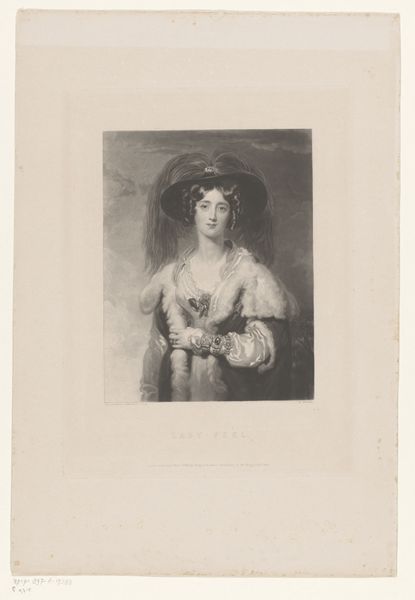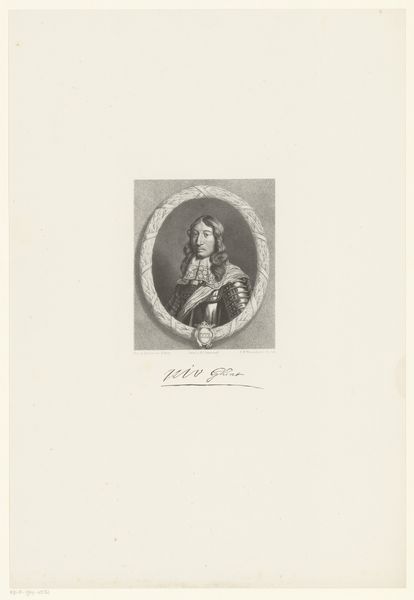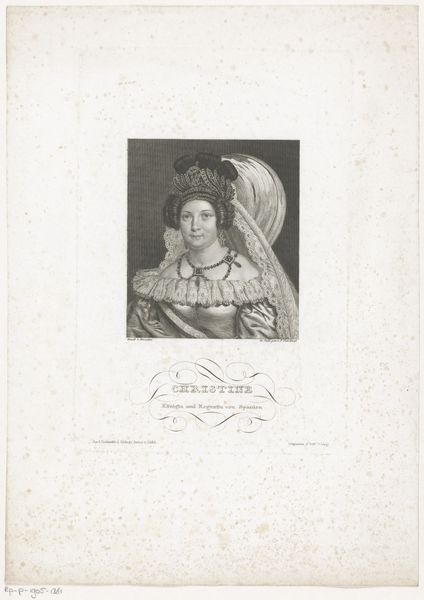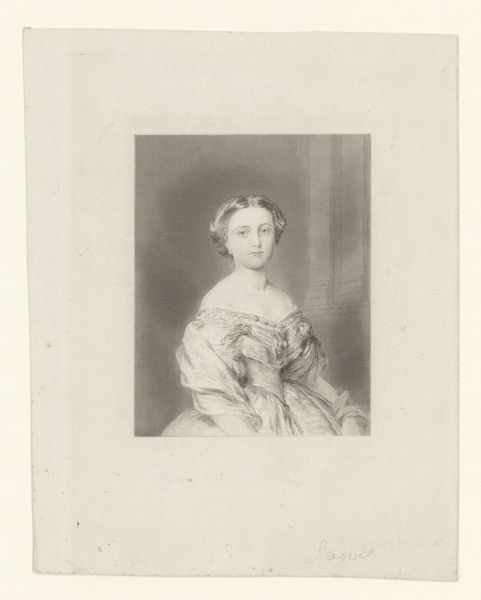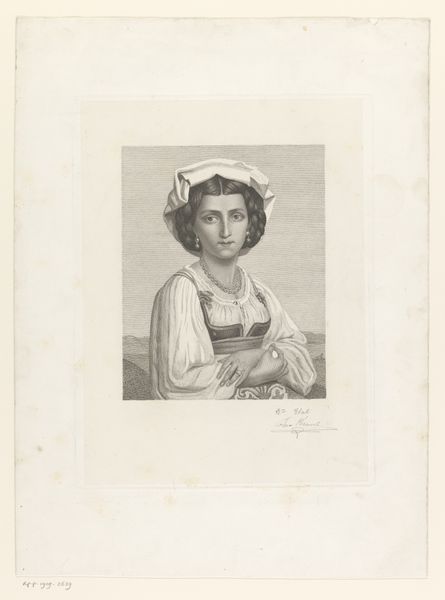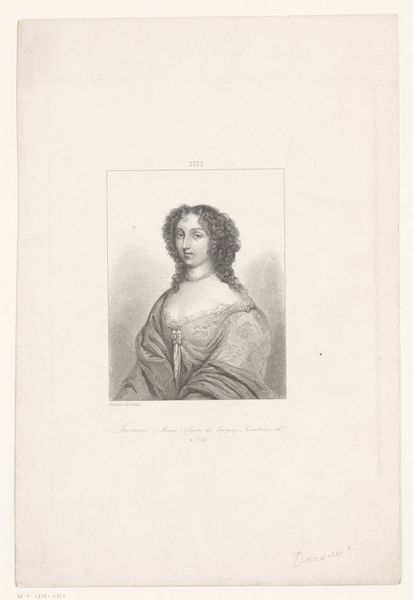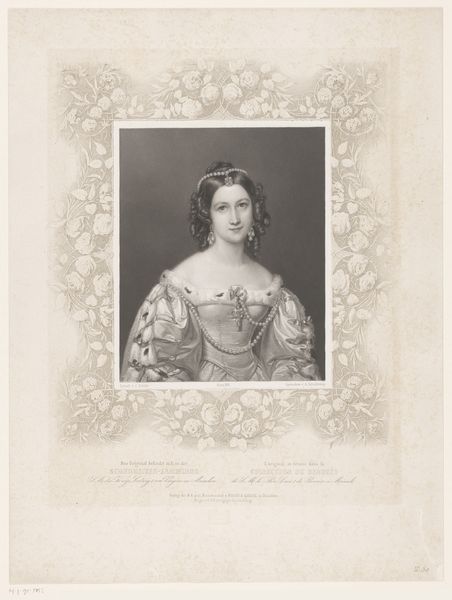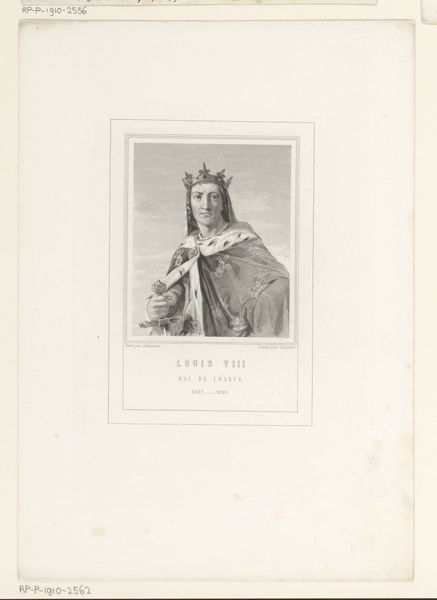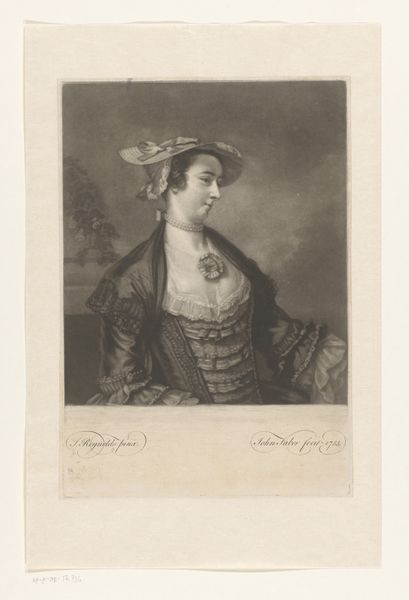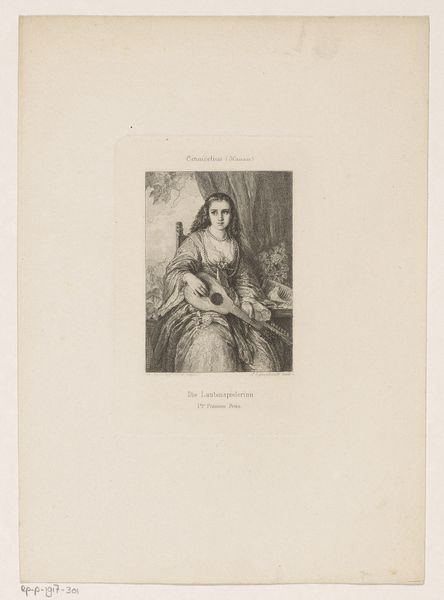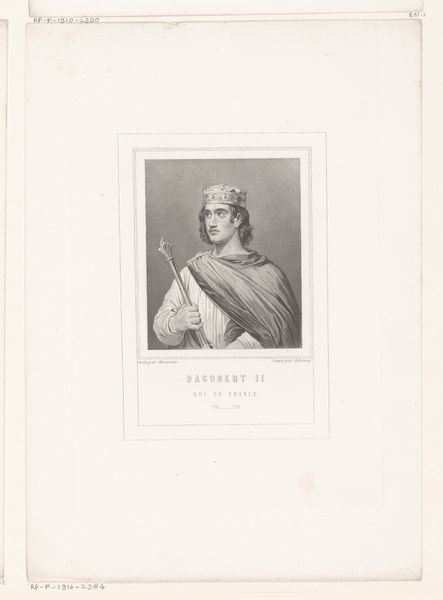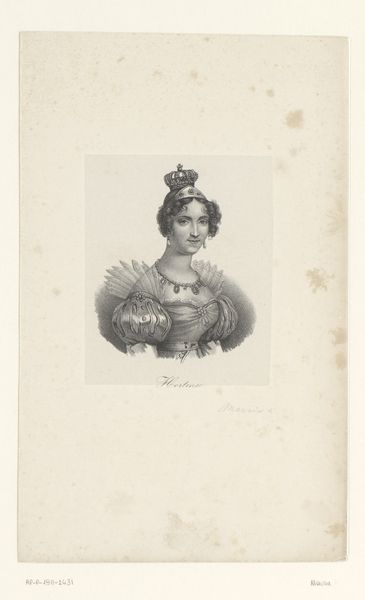
drawing, print, paper, engraving
#
portrait
#
pencil drawn
#
drawing
# print
#
paper
#
history-painting
#
engraving
Dimensions: height 239 mm, width 177 mm
Copyright: Rijks Museum: Open Domain
Curator: Here we have Jacques Etienne Pannier’s "Portret van Dagobert III," dating roughly from 1812 to 1869. It’s an engraving, a print on paper depicting the Merovingian king Dagobert III. Editor: My first impression is one of restrained power. The rendering feels quite meticulous. The artist seems intent on capturing detail, yet the king's gaze hints at an underlying melancholy. Curator: Yes, and to contextualize, Pannier created this during a time when historical figures were being re-examined and often romanticized through art. How does the piece speak to contemporary conversations about leadership and representation? Dagobert, in historical accounts, isn't always portrayed positively. This image asks us, what does it mean to legitimize power? Editor: I'm intrigued by the method itself, this printmaking process. The texture almost gives a soft focus. And think about the labor involved—the precise cuts into the printing plate. How does that level of careful, deliberate creation impact our view of kingship? The very materiality implies considered power, constructed not given. Curator: That's fascinating. If we consider feminist theory, too, perhaps this meticulous portrayal serves to neutralize, or even contest, patriarchal narratives surrounding kingship. The gentleness is subverting strength. The historical narrative may be in line with, say, Foucault's ideas, exploring how the social meanings of power shift over time. The print complicates a straightforward assertion of male authority. Editor: Exactly! It almost humanizes him through the detail – which then plays against what we would perceive as inherent "divine" or brutal rule. The print form suggests wider dissemination. Who were Pannier’s audiences, what biases and cultural expectations colored this creation and shaped its distribution? How many impressions were pulled? Was it crafted for scholarly work, popular consumption or didactic teaching material? Curator: Indeed. The piece transcends a simple portrait. It’s a political statement disguised in apparent objectivity, pushing us to challenge normative ideals. What can a careful engagement with history offer to today's intersectional feminist agenda? Editor: A valuable discussion – for me, the intersectionality of art making. The process of engraving and distribution adds another layer to the examination of social hierarchies and material access. Curator: A powerful perspective from considering its means! It definitely reframes the history we thought we knew. Editor: Absolutely!
Comments
No comments
Be the first to comment and join the conversation on the ultimate creative platform.

